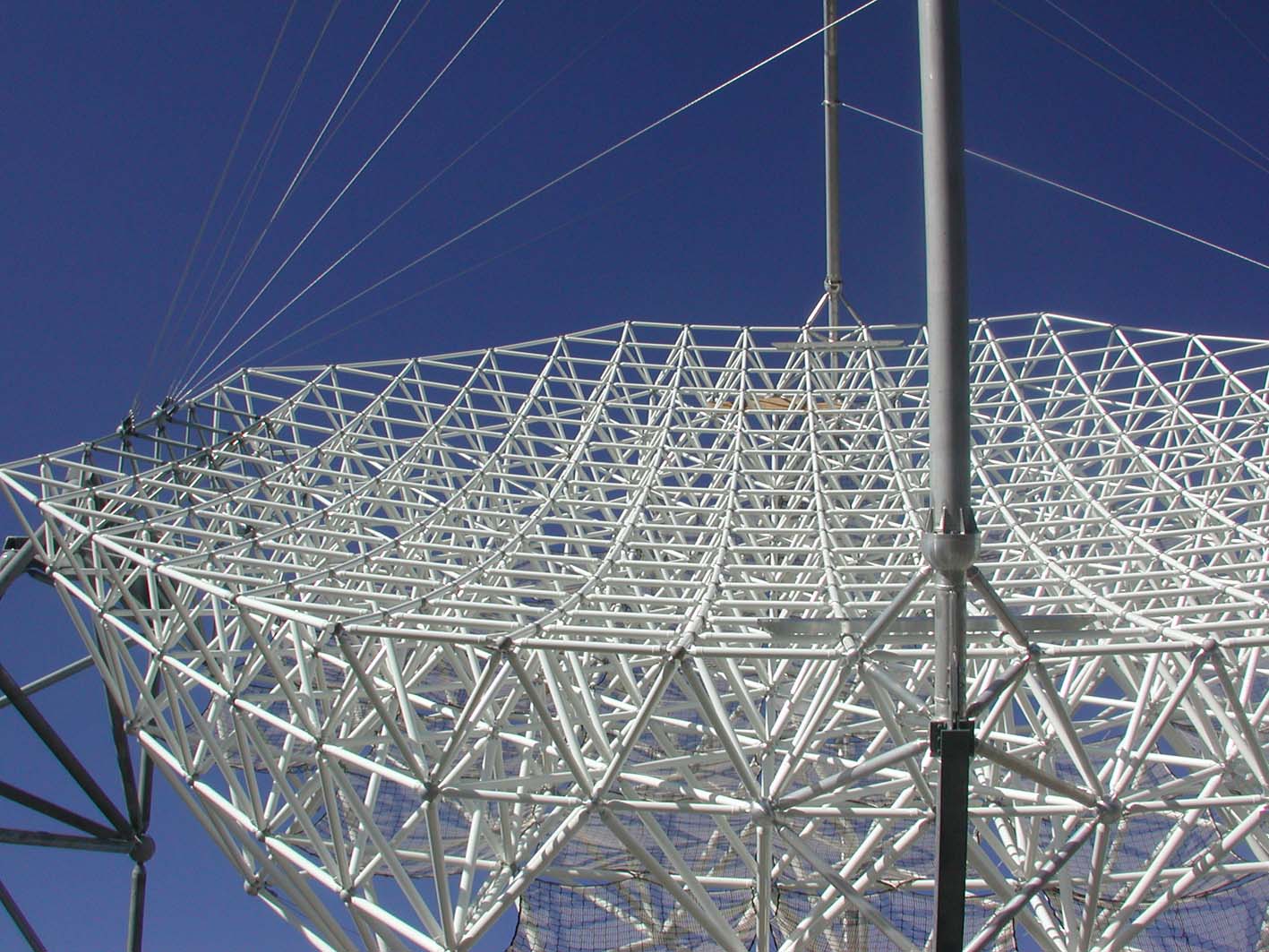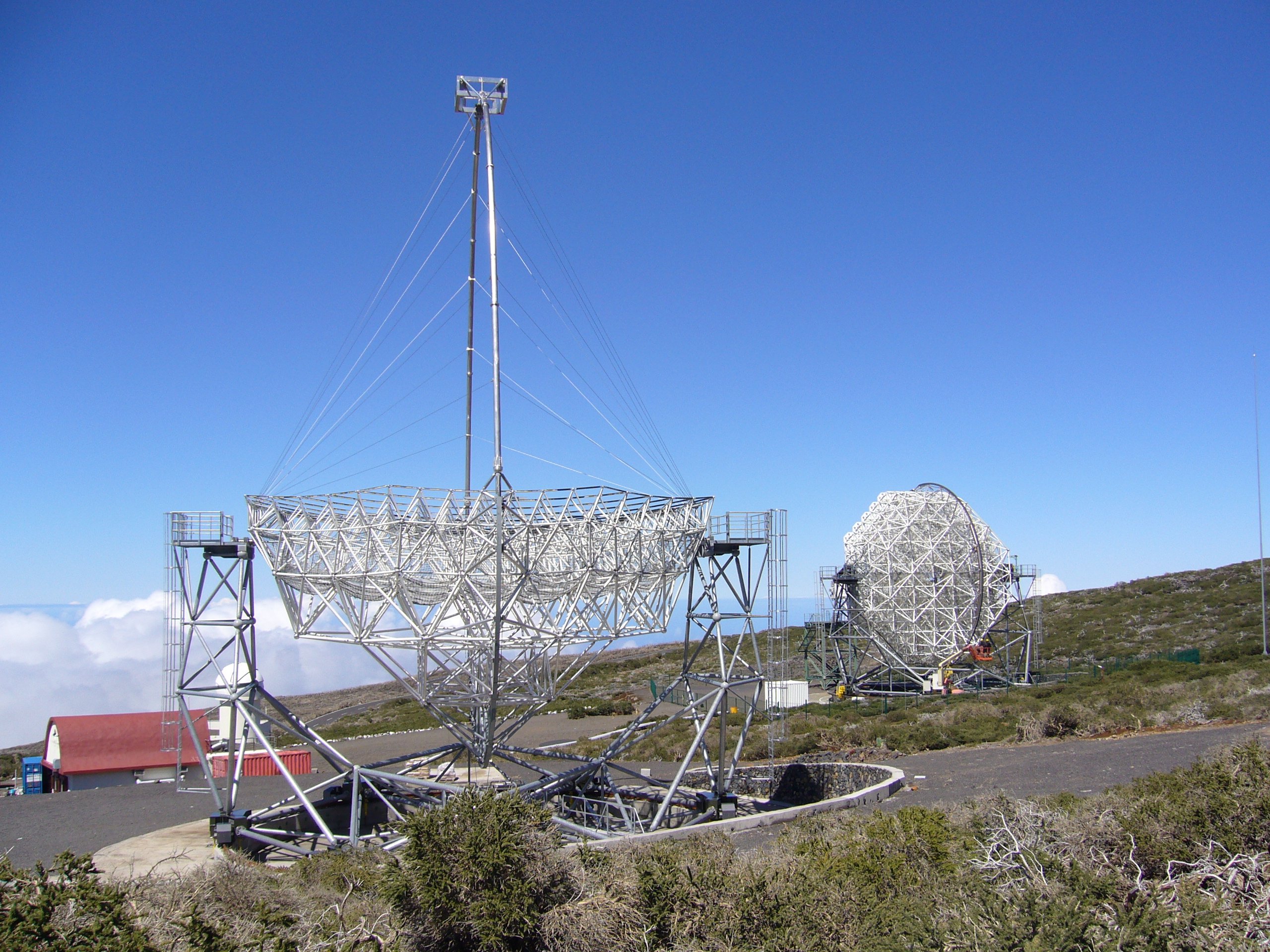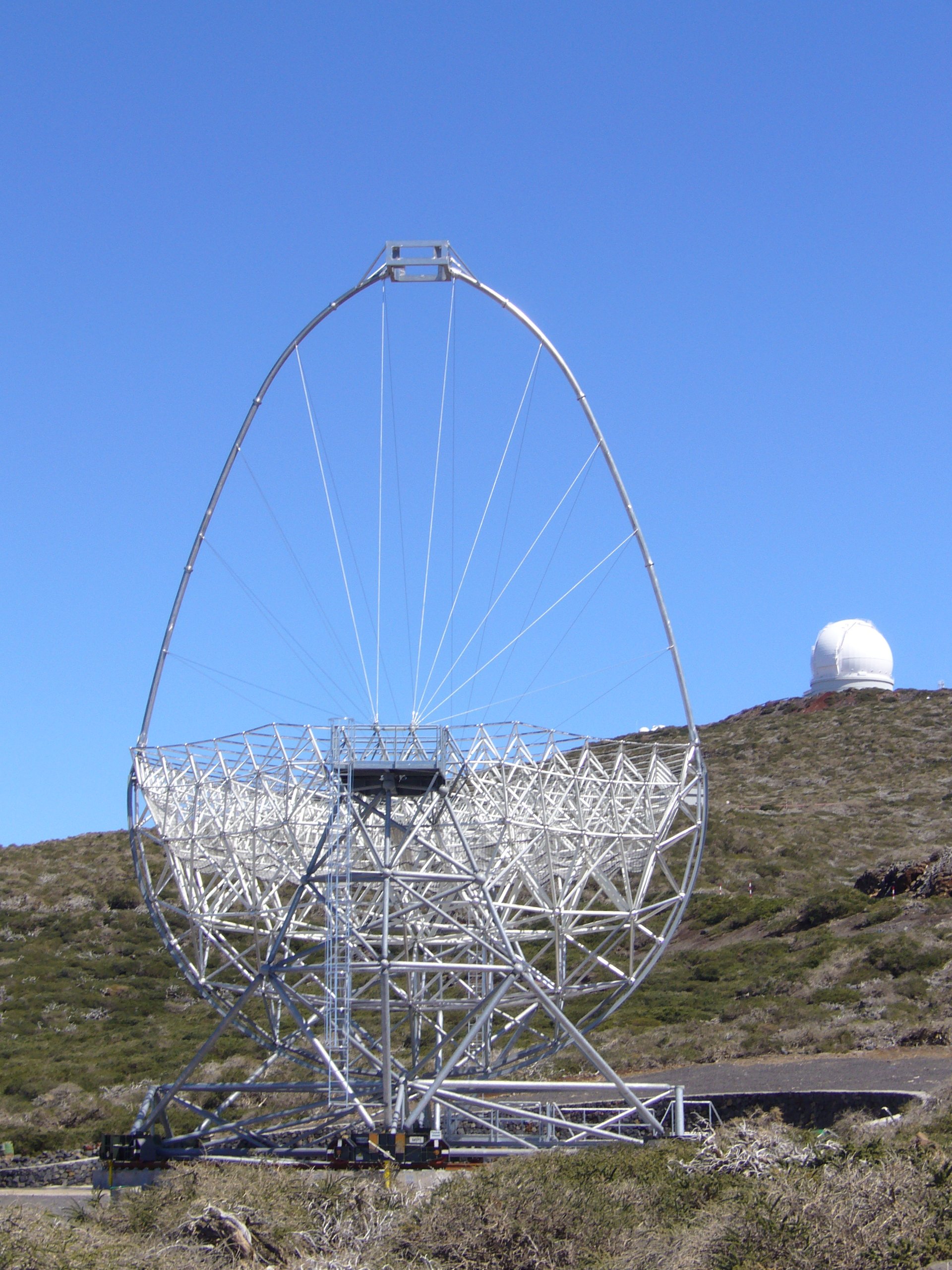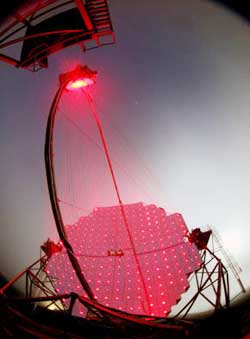Largest Gamma-ray Imaging Telescope in the World on La Palma
- Location: La Palma, Spain
- Completion: 2006
- Client: Max Planck Institute of Physics, Munich
- Scope of Work: Substructure of the 17 m telescope
- Cladding: Diamond-cut aluminium refractor facets
- Type of Structure: MERO space frame structure
The two MAGIC telescopes (Major Atmospheric Gamma-ray Imaging Cherenkov Telescopes) are the largest atmospheric Cherenkov Telescopes in the world.
MAGIC I and MAGIC II are situated at 2,225 m above sea level on Roque de los Muchachos, the highest mountain on La Palma, one of the Canary Islands.
MAGIC telescopes are able to observe cosmic gamma radiation indirectly. They register flashes of light which are the result of cosmic gamma rays entering the atmosphere of the earth. To achieve this, a telescope must react to the respective signals without loss of time, i.e. it must get into the proper position. This is only possible, if the frame of the telescope is of a lightweight build and moved by a powerful drive.
The tessellated mirror faces, each with a surface of 247 sqm, are composed of 1,000 small, dirigible aluminum mirrors, ground with diamonds. They are supported on a specially developed, ultra-light MERO space frame structure of CFK (an extremely light and resilient carbon fibre), which allows a quick adjustment of the telescopes. This four-layer substructure was especially designed and built for the MAGIC telescopes. Thanks to this light-weight structure, the telescopes can ultra-quickly rotate 180 degrees. This technical development made it possible to observe a flash of cosmic gamma rays during the explosion stage proper. Within as little as 40 seconds after the explosion had erupted, and 20 seconds after the satellite SWIFT had given warning of the event, the local team could adjust the telescope in the proper direction and get it ready to take measurements.
With the help of the MAGIC telescopes, scientists can look up over 5 billion light years deep into the universe. Since those devices are placed at a distance of only 85 m from each other, they can be operated stereoscopically and allow the spatial monitoring of gamma ray flashes.








